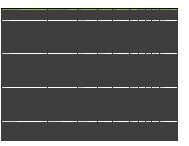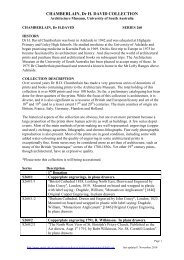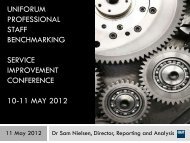GALLERY - University of South Australia
GALLERY - University of South Australia
GALLERY - University of South Australia
Create successful ePaper yourself
Turn your PDF publications into a flip-book with our unique Google optimized e-Paper software.
8<br />
the real. However, because <strong>of</strong> human intervention, this real was always<br />
manipulated in some way. Framing, cropping or contextualising the real,<br />
was there from the very beginning: this was the way in which the stars<br />
were transformed into signs.<br />
Although many histories <strong>of</strong> the mechanical/digital image are grounded in<br />
the progress <strong>of</strong> technology as a means <strong>of</strong> analysing modes and styles, it is<br />
not the technology in itself that is captivating. It is the way in which the<br />
technologies are capable <strong>of</strong> exploring the meeting <strong>of</strong> magic and science,<br />
the way in which they engage us psychologically.<br />
It also needs to be noted that mechanisms, technologies, programmes,<br />
instruments and s<strong>of</strong>tware are all tools that have been designed to do<br />
particular things. The camera obscura, for example, was said to reproduce<br />
Renaissance perspectival space, a one point perspective which positioned<br />
the subject/spectator at the centre <strong>of</strong> the viewing experience. But the<br />
camera obscura is much older than the Renaissance, Helmut Gernsheim<br />
notes that: “The optical principle <strong>of</strong> the camera obscura images was<br />
known to Aristotle (384-322)”. 6 The scientific minds <strong>of</strong> the Enlightenment<br />
may have valued the camera for its indexical and mimetic qualities,<br />
however, it quickly became a very popular device. In the hands <strong>of</strong> the<br />
operator the camera obscura was a theatrical device, a darkroom, a mini<br />
stage upon which nature and culture converged.<br />
From the inception <strong>of</strong> cameras, there has always been a desire by<br />
practitioners and operators to stretch the limits and capacities <strong>of</strong> the<br />
instrument. Add to this the desire and the imagination <strong>of</strong> the operator<br />
and the spectator and one has an intricate map rich in metaphors which<br />
impact on belief, memory, history and psychology.<br />
Digital photography has been described as a kind <strong>of</strong> demon. A monster<br />
that annihilates the analogue and indexical qualities <strong>of</strong> the medium.<br />
These qualities were supposed to anchor photography to the real. The<br />
promise <strong>of</strong> photography, in the service <strong>of</strong> art and science, was that it<br />
would reproduce reality without the interception <strong>of</strong> the operator. The<br />
idea that nature did the work was exploded by the simple fact that<br />
humans pushed the button. The famous and relatively ‘innocent’ case <strong>of</strong><br />
the Cottingley Fairy photographs is just one example <strong>of</strong> the performative<br />
nature <strong>of</strong> the medium in the hands <strong>of</strong> children and at the whim <strong>of</strong> desire. 7<br />
This photographic hoax, like recent day UFO photographs, was spun out<br />
for years and given credibility by Arthur Conan Doyle, the author <strong>of</strong> the<br />
Sherlock Holmes mysteries. The point is that human intervention is bound<br />
to spoil science. In the realm <strong>of</strong> the visual, it’s predictable and endearing<br />
that humans would want to mess up.<br />
There has been a lot <strong>of</strong> debate about the status <strong>of</strong> the medium in art in<br />
recent years. A kind <strong>of</strong> hysteria emanating from the October group and<br />
Rosalind Krauss in particular. She fears that too much inter-media art and<br />
installation results in the disappearance <strong>of</strong> the medium. This seems<br />
to me to be strange from a scholar who championed “sculpture in the<br />
expanded field” and did so much to support the postmodern impetus<br />
in art which essentially undermined the medium as it had been described<br />
by the late modernists in America. Yet retrospectively both Krauss and<br />
Hal Foster, who now believes that design has infected the fine arts, have<br />
come to question the pluralism <strong>of</strong> postmodernism which they believe is in<br />
the service <strong>of</strong> global capital. 8 Thus those who once heralded a postmodern<br />
turn now turn away and impel artists to return to the essentials <strong>of</strong> the<br />
medium. To me this sounds like a retreat into high formalism, a return<br />
to the ivory tower where art and popular culture are safely separated.<br />
It also seems implausible, like a bid to stop time, to return to the glory<br />
<strong>of</strong> a safer formalist avant-garde enshrined by Clement Greenberg in<br />
the 1940s, and now by Rosalind Krauss who follows Greenberg in her<br />
allegiance to the medium. 9<br />
This tendency to retreat into the past cannot stem the flow <strong>of</strong> new<br />
media and technologies. The time <strong>of</strong> mediums is over in its formal sense.<br />
One must ask what is the medium <strong>of</strong> photography? Is it its analogue,<br />
indexical and empirical truth, which has come under so much scrutiny and<br />
criticism? Is it its filmic substance, those layers <strong>of</strong> skin that are stolen and<br />
saved? 10 And then one would ask: is it not the magic and mysticism <strong>of</strong> this<br />
process that is actually compelling rather than the thing in itself? Is it not<br />
the process that enchants us? The promises that fairies actually might be<br />
photographed? And, if this is the case, then surely what we are talking<br />
about is the desire to invent things that are improbable. And now in the<br />
twenty-first century the digital enters centre stage and says you can have<br />
all <strong>of</strong> this and more. The digital and electronic media disperse the concept<br />
<strong>of</strong> the medium. Each new media is predicated on the past but looks to the<br />
future, to new possibilities, new means <strong>of</strong> production and distribution.<br />
You push the button or click the mouse to invent your own fantasies.<br />
Make fairies, ghosts, UFOs; create heroes out <strong>of</strong> miniature models,<br />
crime scenes from ordinary suburban houses. Invest in your imagination,<br />
photoshop will do the rest.<br />
There is no going back to the medium as an essential entity but it is<br />
apparent throughout digital photo and lens-based practice that artists<br />
are looking to the past as much as to the future. Toy cameras and old<br />
technologies are <strong>of</strong>ten combined with digital means <strong>of</strong> presentation.<br />
My recent research suggests that the scanner, arguably a fairly mundane<br />
piece <strong>of</strong> equipment, is the tool that is used the most in photo-based<br />
production. 11 The scanner allows artists to scan almost anything (now<br />
even three dimensional objects) and to create enormous digital files which<br />
then allow the artist to print at scales unimaginable to the photographers<br />
<strong>of</strong> the 1970s. It also allows for the picture to be printed on virtually any<br />
surface. There’s nothing magical about a scanner, it’s essentially a copier.<br />
But it’s probably the most important conduit in the chain <strong>of</strong> production.<br />
Much like the simple modem that allows us to participate in the World


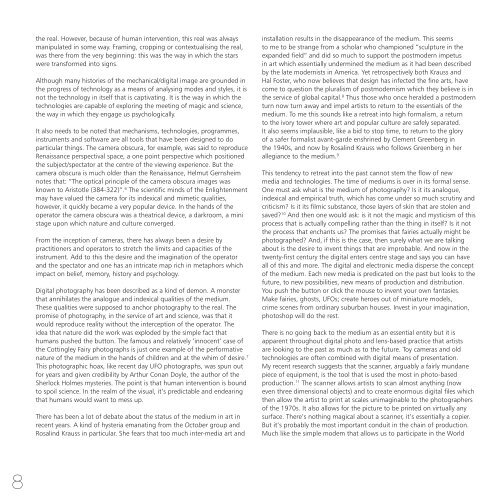
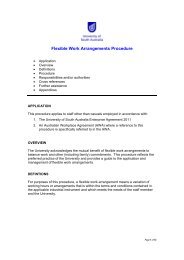
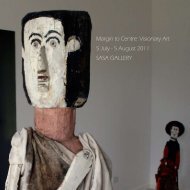
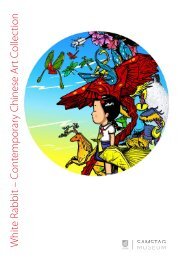
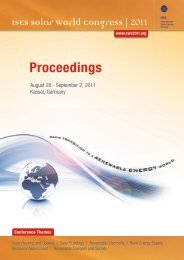
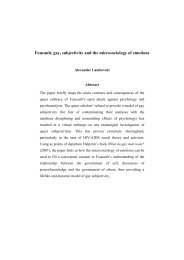
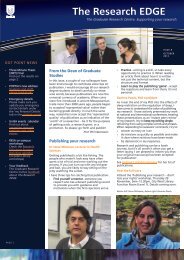
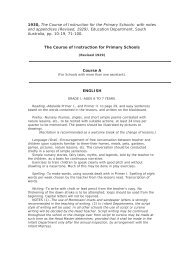
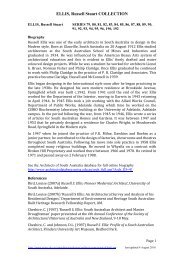

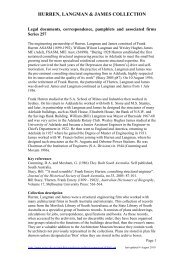
!['The Asian Delegation Chooses […] the Wu-Tang Clan!'—](https://img.yumpu.com/7767765/1/184x260/the-asian-delegation-chooses-the-wu-tang-clan.jpg?quality=85)
